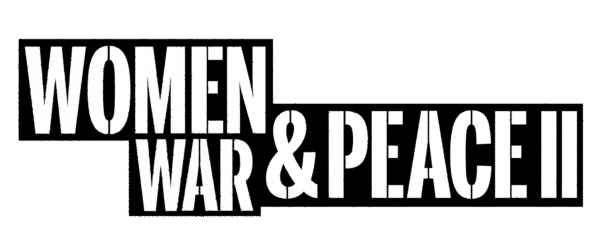
In this exciting new monthly series from peace-building organization NGO International Alert, we explore how achieving peace exists within our collective power. Through a new article each month, we will profile peacemakers around the world, from the stigmatized women and girls who escaped from Boko Haram in Nigeria to those tackling sexual and gender-based violence in areas like Pakistan and Tajikistan.
Our series begins with International Alert’s CEO, Harriet Lamb, explaining why “peace is a verb”:
From London, it is only a short flight to Ukraine, a country at war. The long path away from violence here, as everywhere, is not only about silencing the guns or making deals at the negotiating table but also working with communities and the next generation. Here, as everywhere, strong women will be key to helping to build peace.
This month, I was lucky enough to meet one such woman, Iryna Sazonova, who is making a difference by running Fortress Forest, a summer camp for children who have suffered in the war. Iryna described a girl who was only 14 years old when her mother was killed while her father was away fighting. One day when the girl was coming home from school, a soldier grabbed her and then raped her for two consecutive days. Not surprisingly, she then started to shut out the world. When she first came to the camp, she would not look anyone in the eye or let anyone touch her. Gradually, the gentle warmth of the camp’s environment helped her to talk about the ordeal and open up to people again.
Sadly, her experience is not an isolated one. U.N. data for one local authority on the line of confrontation found that 82 percent of all cases of violence were classified as domestic violence. This is linked to the war. I met men who admitted that when he and his comrades returned from the frontline, they were all hyped up with aggression, so they “hit out.” Others told me that when they left the army, feeling unsettled and disillusioned, they first turned to the bottle and then began beating their wives and children.
Too often women are the victims of war, but according to author Vivian Greene, “Life is not about waiting for the storm to pass; it’s about learning to dance in the rain.” While rain is pouring down on many women around the world caught up in brutal conflicts, they do not need to be the victims of war. They can also be at the heart of solutions to find peace.
Some women already do play their part as leaders in creating peace, but they must also stand ready to play a far larger role. Women shockingly comprised fewer than four percent of signatories to peace agreements between 1992 and 2011, as well as fewer than 10 percent of peace negotiators during that time. That must change. Given that half of all peace deals fall apart within five years, it is vital that we do everything we can to help them hold. Research shows that women’s participation increases the probability of a peace agreement lasting 15 years by 35 percent.
But peace does not appear by magic on the wings of a dove. It is involves hard work, and that is why “peace” is a verb. Just as individuals making an area safe from unexploded landmines have to work carefully to clear the debris of war, so too do we have to build peace piece by tiny piece, step by step, and community by community. Peace is as much about communities living side by side and resolving their differences without violence as it is about fighters laying down their guns. Long-term policies are needed that empower women to move into leadership positions and that address those negative masculine behaviors that can lead to violence. Only by doing this can we establish more peaceful societies.
Such community-level work is especially important given that most wars have now grown from battles between nation states to complex fighting between myriad armed groups. As a result, too often the rules of law are being ignored with civilians caught up in brutal conflicts. But they are not just the victims of war; they must also be at the heart of solutions to find peace.
While the challenges may seem jaw-dropping, some amazing women are showing the way. In the Democratic Republic of Congo (DRC), for example, where there are 40 armed bands, Solange Lwashiga leads a women’s organization working for peace. She is a key figure in the dynamic movement Rien Sans Les Femmes (Nothing Without Women), where 160 small groups came together to campaign to increase women’s roles in governmental and societal decision-making. Their successes include the passing of a women’s rights law in 2015 mandating that 40 percent of all new hires by the governor of the province of South Kivu be female. Additionally, the movement has an exciting campaign tool: brightly colored cloth that women wear as headscarves, dresses, skirts, and bags wherever they go.
Just like these Congolese women, we have to galvanize and involve civil society by building and supporting peace, whether in the USA or in raging conflicts such as in Syria. It is inspiring how, against all the odds, these women keep reaching for peace even as bombs are exploding around them. Clearly, “peace” is a verb, and “women” is the noun.
Harriet Lamb is the CEO of International Alert.


